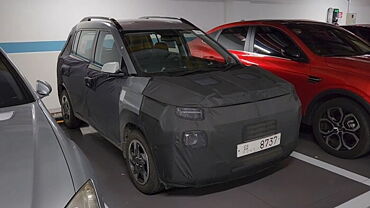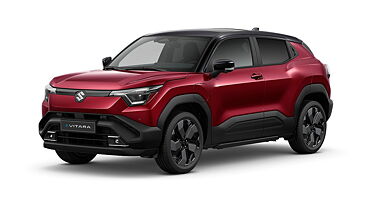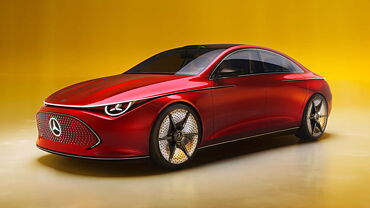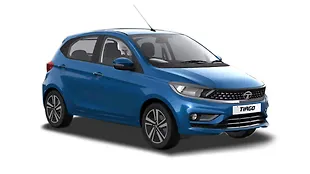
The Hyundai Grand i10 Nios is finally here, and it is set to take on its B-segment rivals like the Maruti Suzuki Swift and the Ford Figo, with the latter receiving a facelift earlier this year. The Grand i10 Nios has been priced between Rs 5-7.99 lakhs (ex-showroom India). The generation change brings in an all-new platform, new design, larger dimensions and improved equipment list. Here’s how it stacks up against its American counterpart, the Ford Figo.

Exterior
As is the case with modern-day Hyundai cars, the design of the Grand i10 Nios is evolutionary rather than being revolutionary. The fascia is a step-up from the old-gen model with sharp projector headlights, cascading grille and the new bumper. The silhouette is familiar to the old-gen model but features a floating roof element and dual-tone 15-inch alloy wheels. The rear design, although all-new, is contemporary with conventional taillights.

The current-gen Ford Figo has been around for over four years now, and the facelift brought in mild changes to the exteriors. It received redesigned bumpers, fore and aft, and 15-inch alloys on the top-spec variant. Further, the ‘Titanium Blu’ trim gets blacked-out grille, mirrors, roof and alloys. It also features blue highlights on the fog lamp enclosures and a black decal on the doors and tailgate.

Interior
Step inside the Grand i10 Nios, and it is instantly apparent that this is a new-generation model. It features dual-tone grey interiors with an optional black interior theme for the dual-tone models. There’s an eight-inch floating touchscreen display with Apple CarPlay and Android Auto and an analogue-digital instrument cluster with a 5.3-inch MID. Features list includes automatic climate control, wireless charging, rear AC vents and a reverse camera among others. On the safety front, the car gets dual front airbags, ABS with EBD, rear parking sensors, high-speed alert system and front seat belt reminder as standard.

The new Ford Figo continues with the same all-black cabin, but the biggest change is the addition of a touchscreen infotainment system. The top-spec Titanium Blu trim comes with blue highlights on the door pads and contrasting blue stitching for the seats. The car comes with a standard safety kit that includes dual airbags, ABS with EBD, parking sensors, seat belt reminder and speed alert system. The top-spec variant gets auto headlamps, rain-sensing wipers, automatic AC, leather-wrapped steering wheel, and six airbags.
Engine and Transmission
Powering the Hyundai Grand i10 are 1.2-litre petrol and diesel engines. The gasoline engine produces 83bhp and 113Nm, while the oil burner makes 74bhp and 190Nm. Both the engines will be mated to either a five-speed manual transmission or a Smart Auto AMT. The petrol AMT is available in the Magna and Asta trims, while the diesel AMT is offered in the lone Sportz trim.

On the other hand, the Ford Figo is available with three engines – two petrol and a diesel unit. The 95bhp/120Nm 1.2-litre petrol motor comes mated to a five-speed manual transmission, while the 121bhp/150Nm 1.5-litre engine is paired with a six-speed torque converter automatic. Then, there’s the 1.5-litre diesel motor that makes 99bhp and 215Nm and is coupled to a five-speed manual transmission.

Conclusion
The Hyundai Grand i10 Nios will co-exist along with the Grand i10. This two-pronged strategy is aimed at thwarting the competition at the lower as well as higher-end of the B-segment. With the variable standard warranty that Hyundai is offering and a price range of Rs 5-7.99 lakhs (ex-showroom India), Hyundai sure has kept the competition at bay.

![Hyundai Grand i10 Nios [2019-2023] Image Hyundai Grand i10 Nios [2019-2023] Image](https://imgd.aeplcdn.com/272x153/n/cw/ec/35465/grand-i10-nios-exterior-right-front-three-quarter-2.jpeg?q=80)
















![Hyundai Grand i10 Nios [2019-2023] Right Front Three Quarter Hyundai Grand i10 Nios [2019-2023] Right Front Three Quarter](https://imgd.aeplcdn.com/199x112/n/cw/ec/55861/right-front-three-quarter0.jpeg?wm=1&q=80)
![Hyundai Grand i10 Nios [2019-2023] Front View Hyundai Grand i10 Nios [2019-2023] Front View](https://imgd.aeplcdn.com/199x112/n/cw/ec/50292/hyundai-grand-i10-nios-front-view0.jpeg?wm=1&q=80)
![Hyundai Grand i10 Nios [2019-2023] Exterior Hyundai Grand i10 Nios [2019-2023] Exterior](https://imgd.aeplcdn.com/199x112/cw/ec/41959/Hyundai-Grand-i10-Nios-Exterior-168573.jpg?wm=1&q=80)
![Hyundai Grand i10 Nios [2019-2023] Action Hyundai Grand i10 Nios [2019-2023] Action](https://imgd.aeplcdn.com/199x112/n/cw/ec/45302/hyundai-grand-i10-nios-action84.jpeg?wm=1&q=80)
![Hyundai Grand i10 Nios [2019-2023] Dashboard Hyundai Grand i10 Nios [2019-2023] Dashboard](https://imgd.aeplcdn.com/468x263/n/cw/ec/44465/hyundai-grand-i10-nios-dashboard-4.jpeg?wm=1&q=80)




























